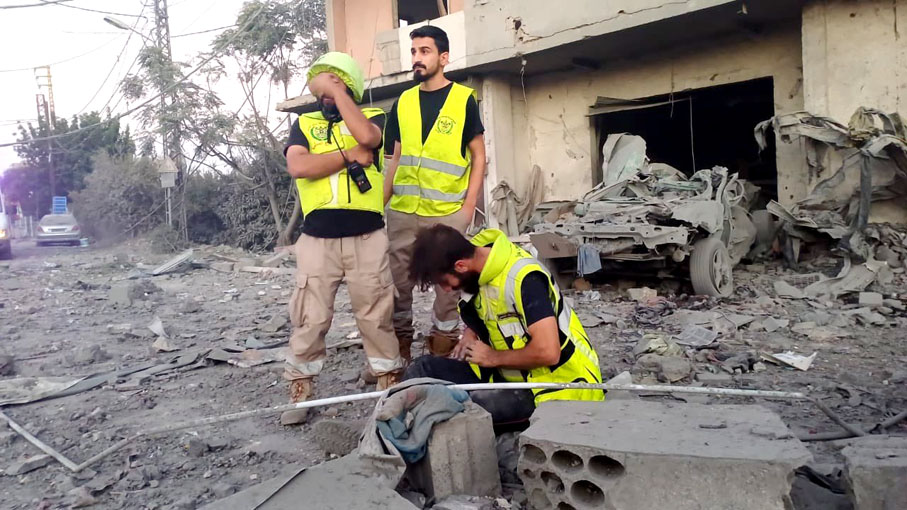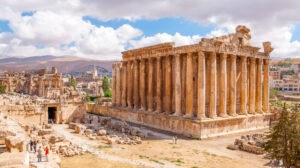
ISRAEL has killed at least 3,452 people and injured more than 14,664 in Lebanon since hostilities began last October between the genocidal Zionist regime and Hezbollah.
The Israeli military is repeatedly targeting healthcare facilities and medical workers in Lebanon, having killed at least 208 health sector workers and injured 311 others according to Lebanon’s Ministry of Public Health.
The ministry also recorded at least 286 Israeli attacks on healthcare services, including 66 attacks on hospitals and 220 on emergency medical services.
As a result, some 40 hospitals have been damaged, with eight rendered nonfunctional, and 249 emergency vehicles have been damaged, in what human rights organisations say constitutes war crimes.
The attacks are forcing medical facilities to close, in a country where the privatised healthcare system was already in dire straits due to an ongoing economic crisis.
Understaffed and under-resourced, the health system has been struggling to maintain services for all those in need, with depleted supplies and exhausted health workers.
Of the 66 Israeli attacks on Lebanon’s hospitals, most have taken place in the country’s southern and western regions and the capital Beirut, with some hospitals struck multiple times.
On October 24, the Health Ministry reported at least eight hospitals had been forced to close – half of them in the Baabda district in western Lebanon.
Seven other hospitals are only partially functioning.
In addition, Israeli forces have attacked primary healthcare facilities at least 25 times, resulting in the forcible closure of 58 facilities.
Israel has also attacked ambulances, fire trucks and other rescue vehicles 249 times, claiming – without providing any evidence – that Hezbollah is using ambulances to transport weapons.
Hospitals and medical facilities are protected under international law because they are civilian installations.
Last month, Human Rights Watch documented three attacks on medical facilities involving apparent war crimes.
On October 3rd, Israeli forces attacked an ambulance, and a hospital in southern Lebanon the following day, killing 14 paramedics.
On October 22, Israel killed 13 people in a strike near a hospital in southern Beirut, according to the Lebanese Health Ministry.
The overnight attack near Rafik Hariri University Hospital, Lebanon’s biggest public health facility, a few kilometres from the city centre, also wounded 57 people.
In 24 hours over last weekend alone, the Israeli military carried out 145 attacks on Lebanon, intensifying its bombing campaign on the country in defiance of international calls to stop its killing machine in the region.
Lebanese Minister of Environment Nasser Yassin said that most of the raids had targeted the South and Nabatiyeh governorates in Southern Lebanon.
A report published on Sunday said that there have been a total of 13,222 attacks since the beginning of Israel’s offensive against Lebanon over the past 13 months.
Lebanon’s National News Agency (NNA) said that Israeli warplanes had destroyed a 12-storey residential building in the suburb of Chiyah, south of the capital Beirut.
It also reported violent Israeli airstrikes on Beirut’s Burj al-Barajneh and Hadath neighbourhoods.
The aerial assault on Hadath hit the vicinity of Saint George Hospital, the report added.
The Israeli attacks came after Lebanon’s Hezbollah resistance movement conducted successful retaliatory operations against five major Israeli military bases in the city of Haifa and its surroundings in the northern part of the occupied Palestinian territories.
Hezbollah opened a ‘support front’ on October 8th last year in response to the Israeli regime’s genocidal war against the Gaza Strip which was launched the day before.
The Lebanese resistance movement has been carrying out daily operations in the regions north of the Israeli-occupied territories.
Since September 23, the Israeli army has been launching unprecedented air attacks on Lebanon in a dangerous escalation with Hezbollah.
In late September, the regime assassinated Hezbollah chief Sayyed Hassan Nasrallah.
Since then, the resistance group has increased its retaliatory attacks against Israeli targets and vowed to continue its fight in support of Gaza and Palestine, and in defence of Lebanon.

Meanwhile, cultural experts have urged the United Nations to take immediate measures to protect Lebanon’s world heritage sites against Israeli attacks.
A large group of cultural professionals, including archaeologists and academics, called on the UN to safeguard war-torn Lebanon’s heritage in a petition published on Sunday ahead of a crucial UNESCO meeting.
In the petition, they urge UNESCO to protect Lebanese heritage sites by establishing ‘no-target zones’ around them, deploying international observers and enforcing measures from the 1954 Hague Convention on cultural heritage in conflict.
‘Lebanon’s cultural heritage at large is being endangered by recurrent assaults on ancient cities such as Baalbek, Tyre and Anjar, all UNESCO world heritage sites, as well as on other historic landmarks,’ says the petition.
It calls on influential states to push for an end to military action that causes damage to sites, as well as adding protections or introducing sanctions.
Change Lebanon, the charity behind the petition, said signatories included museum curators, academics, archaeologists and writers in Britain, France, Italy and the United States.
In this regard, 300 prominent cultural figures signed the petition to UNESCO’s chief Audrey Azoulay to safeguard Lebanese cultural sites by establishing several ‘no-target zones’ around them.
The petition was published ahead of a UNESCO meeting in Paris yesterday, Monday.
This was the fourth extraordinary meeting of the Committee for the Protection of Cultural Property at the request of Lebanon and with the support of two-thirds of the members of the Committee.
It was set to decide whether Lebanese cultural sites be placed under ‘enhanced protection status’ which gives heritage sites ‘high-level immunity from military attacks’.
UNESCO said: ‘Criminal prosecutions and sanctions, conducted by the competent authorities, may apply in cases where individuals do not respect the enhanced protection granted to a cultural property.’
‘My heart is breaking. My soul is aching,’ one archaeologist said, as Roman amphitheatres, crusaders’ citadels, and centuries-old souks were damaged, threatened, or destroyed in Israeli strikes in recent weeks on Baalbek in the east and Tyre in the south.
In one of several Israeli strikes in past weeks, the Roman temples of Baalbek, designated as UNESCO World Heritage sites, came under attack in Lebanon’s eastern Bekaa Valley
According to the local authorities, Israeli forces struck a heritage house, damaging the historic site.
The region’s governor said ‘a missile fell in the car park’ of a 1,000-year-old temple, the closest strike since the start of the war’.
The ruins host the prestigious Baalbek Festival each year, a landmark event founded in 1956 and now a fixture on the international cultural scene, featuring performances by music legends like Oum Kalthoum, Charles Aznavour and Ella Fitzgerald.
Lebanon, which is located on the eastern shore of the Mediterranean has been at the crossroads of ancient civilizations and boasts a rich history.
From ancient times to the present, it has been part of the Persian, Roman and Muslim empires where people of different religions lived side by side – until now – in peace.
Numerous World Heritage Sites are located in Lebanon, including millennia-old archaeological sites, towns and temples. The historic village of Mhaibib, home to an ancient shrine, and the town of Nabatiyeh, which had a centuries-old market, have been destroyed in Israeli attacks.